Synergy. Downsizing. Mindshare. You just rolled your eyes, didn't you?
There are few things more obnoxious than business buzzwords. And Standard Operating Procedures (or SOPs for short) might be the worst of them all. Namely, because most SOPs are ineffective. They're explained in clunky manuals laced with technical jargon, and they're too confusing to make anything more efficient.
But if you do SOPs right—using clear, detailed instructions based on past experience—they can protect you from catastrophe. Literally.
The Great Train Wreck of 1856

On July 17th, 1856, twenty years before the telephone was invented, an excursion train taught the world why Standard Operating Procedures are needed. It left Philadelphia's Master Street Depot 23 minutes behind schedule, and the inexperienced engineer pushed the train as fast as possible to make up for lost time.
Meanwhile, another train was scheduled to run on the same line, inbound, towards Philadelphia. Both trains knew each other’s schedule, and the plan was for one train to use a siding to bypass the other. That would've worked, if the second train knew of the delays—but the engineer failed to telegraph any information about the new timeline.
By the time they spotted each other, it was too late: A head-on collision occurred, leaving more than 50 dead and 100 injured.
SOPs would have helped the engineers avoid a collision. Today's processes require prompt communication about any railroad delays, but they were far from common 160 years ago.
The Birth of SOPs
After the Great Train Wreck of 1856, public outcry prompted railroad companies to implement more standardized safety measures. Thus, Standard Operating Procedures were born. And as businesses grew from mom-and-pop shops into national outfits, SOPs became commonplace.
They realized that informal, ad hoc communication wouldn't cut it in an interconnected world. Too much got lost in translation, and avoidable accidents kept cropping up.
Companies started to write manuals filled with step-by-step guides for each important procedure. Whether an employee was scheduling a delayed train or placing an international order, the manual held every answer.
Standardizing each process helped businesses avoid disasters. But customers benefitted, too. In his book The E Myth Revisited, Michael Gerber finds that consumers received a more a consistent level of service thanks to SOPs.
No matter how good your product or service is, there's no faster way to lose a customer than providing an inconsistent experience.
How to Build Your Own Standard Operating Procedures
Anything that needs to be done more than twice needs to be documented.
Here's the golden rule of SOPs: Anything that needs to be done more than twice needs to be documented.
Good SOPs have the same framework, no matter what industry you work in. (The Environmental Protection Agency's Standard Operating Procedures are a great template.) Your handbook should include:
Detailed instructions
Checklists with measurable results
Organizational chart
No matter how small your business is, you need to create an organizational chart. Break down the different aspects of your organization, figure out who’s running what, and make the chain of command obvious.
This is your chance to create accountability. The entire point of having Standard Operating Procedures is that you’re able to entrust key tasks to others. It also helps your employees understand who their direct supervisor is, and where they fit in with everyone else.
Detailed instructions
SOPs are notorious for being incomprehensible masses of text (I know, it's ironic). Make sure you avoid this pitfall, otherwise no one will ever actually read and use your procedures.
There are two key ways to prevent this from happening:
1. Make sure that you have someone in-house write the procedures for your business.
Research shows that we're more likely to distrust manuals written by outsiders. And why would you entrust such an important task to someone who doesn’t understand the intricacies of your organization? If you don't write the manuals yourself, you're on the fast-track to some very expensive paperweights.
2. Ensure that you’re using plain language in your SOPs.
Anyone should be able to understand your procedures. Don't assume jargon is automatically understood; take the time to explain key terms. You want to ensure that results are systems dependent, not people dependent.
Checklists with measurable results
Checklists have incredible power to reduce mistakes.
Standard Operating Procedures are essentially checklists with detailed instructions. However, you must make sure that your checklist is clear, accurate, and easy to follow.
Great checklists also produce measurable results. A recent study found that developing goal-based scenarios—tasks with stated objectives—help you reduce the learning curve of specific skills. In the early 1990s, Andersen Consulting successfully reduced the time and money spent on education and training employees for a hotel chain by introducing goal-based scenarios.
Remember that measurable results and goals are simple to execute and assess. A vague task like "promote article" provides no measurable results, but "tweet article to 15 influencers" gives you a set goal to achieve.
The Tools to Build Standard Operating Procedures
Traditionally, SOPs are documented in cumbersome manuals. You could make one of those with Word and a laser printer (and watch it gather dust), or you could use a lightweight documentation app to build a database of information.
Typically, you'll want your SOPs—along with organizational charts, instructions, and checklists—in one place. However, sometimes there's a better tool for the job, and it'll make more sense to make each on their own, perhaps with one document that brings everything together in one place.
Here are some great tools to help you build modern SOP documents:
SweetProcess
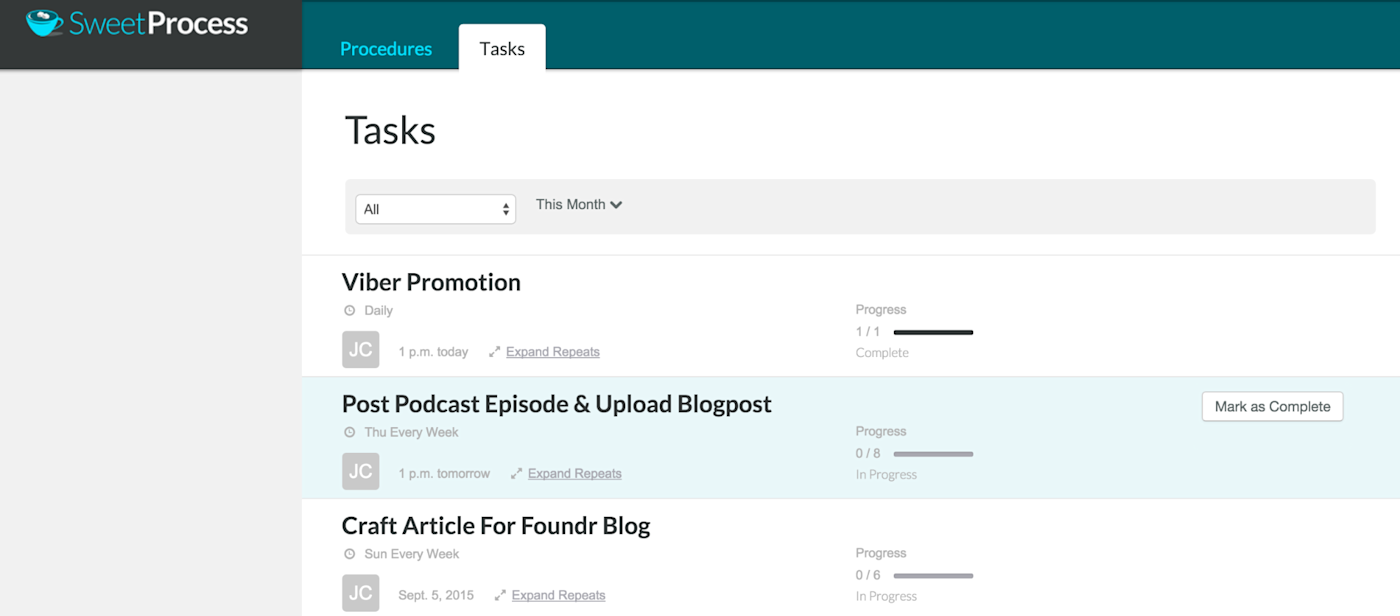
SweetProcess is specifically designed for creating Standard Operating Procedures. You can use it to create all of the documents you need for your SOP, complete with detailed instructions, photos or screenshots, and checklists.
Here’s an example of Foundr Magazine's SOP in SweetProcess, detailing how to upload a new podcast episode:
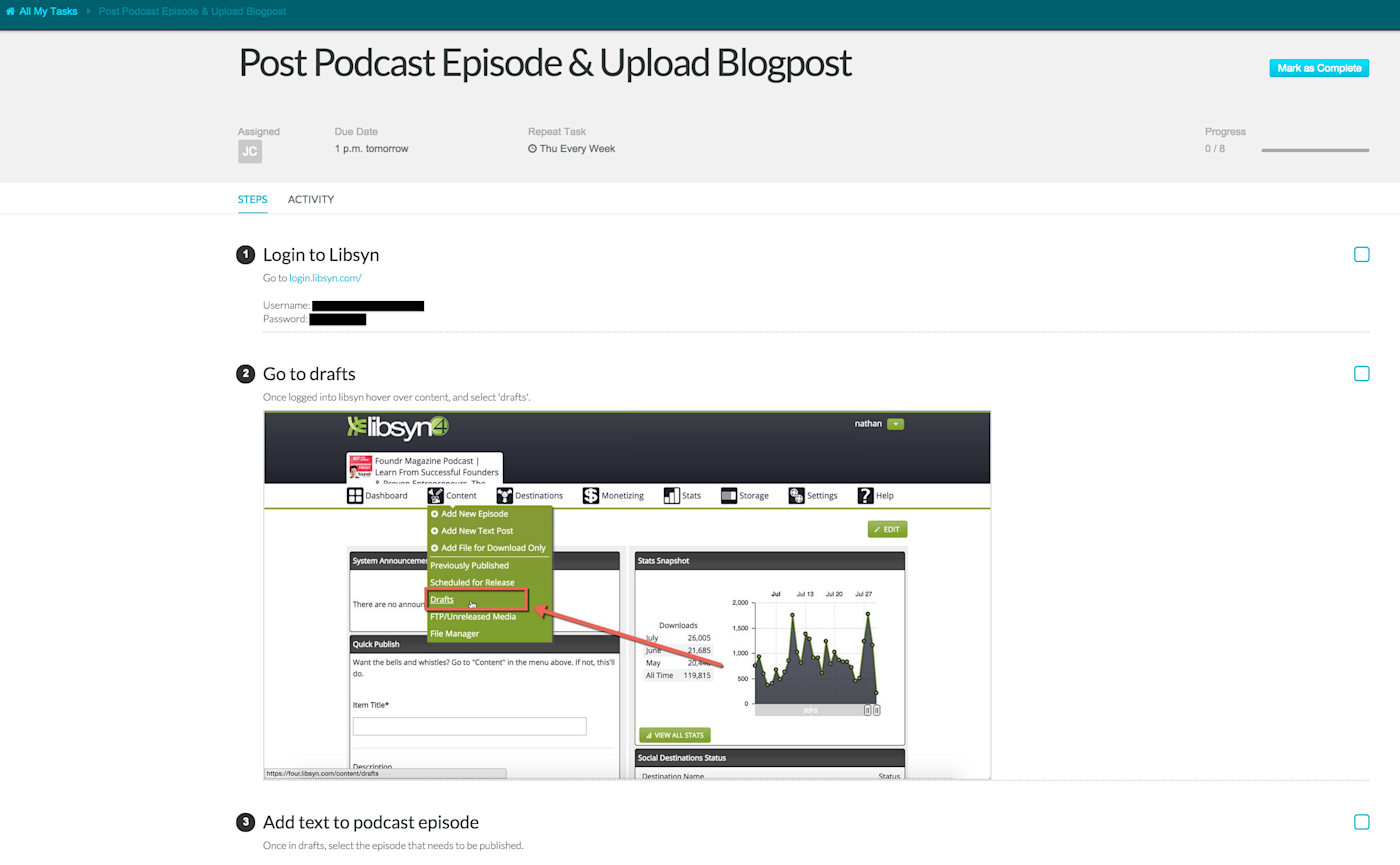
You can create detailed step-by-step checklists for each task, with images, files, and links to other team resources. From there, you can assign them to a specific team members, and set due dates, prompting SweetProcess to send you reminder emails anytime a task is close to being due.
It's a modern take on SOPs—one that your team will actually want to use. You can try it free for 14 days; after that, it'll cost $39 per month for a business plan.
Process Street
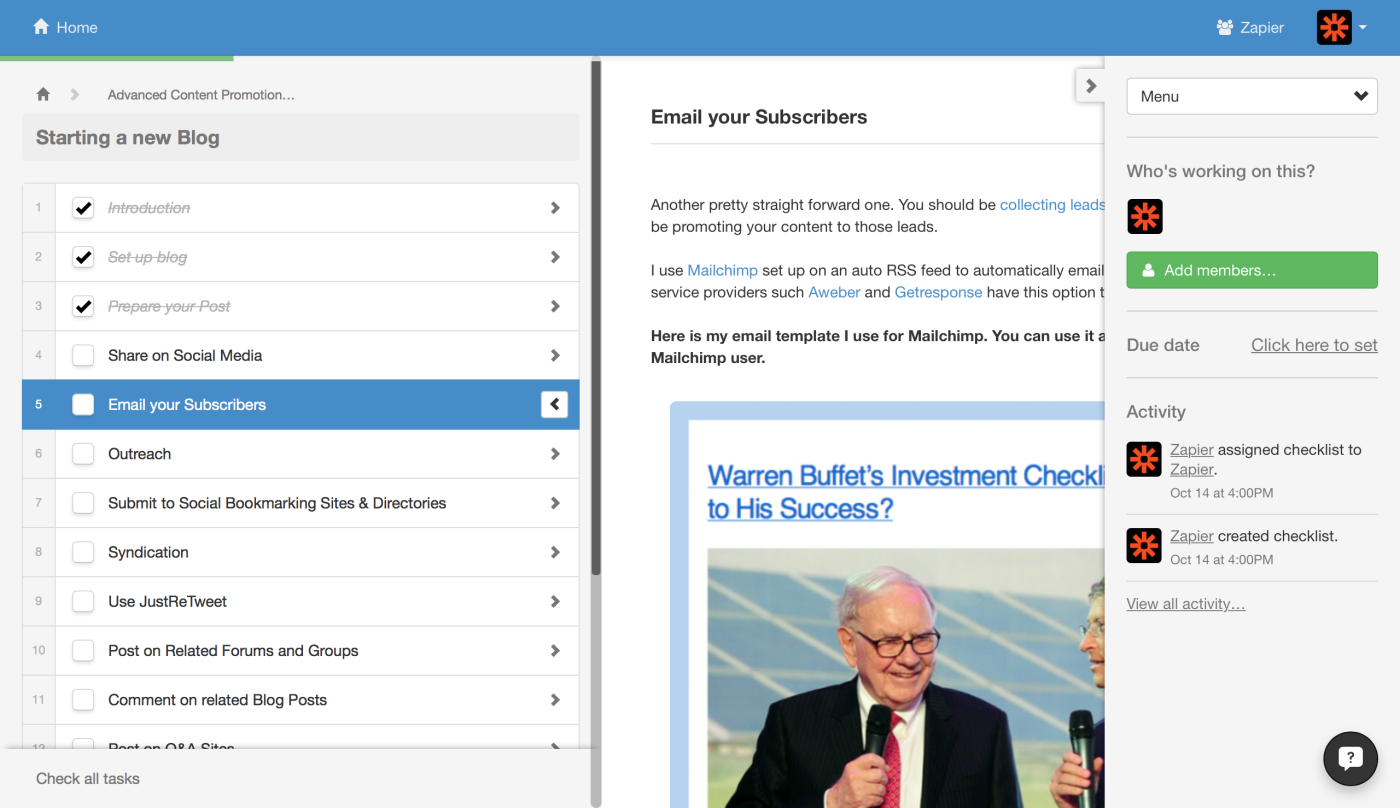
Detailed operating procedures need more than just a checklist—they need in-depth instructions with diagrams, videos, and companion files to make sure everything's understood. Process Street's checklists let you build this documentation alongside your checklists. Whenever you check off one step in your project, you'll see the next step and its companion documentation so you can dive right into the job.
Every checklist you make in Process Street is designed as a template, which you can re-create each time a process starts. Or, you can schedule workflows to automatically start on a schedule, to keep your team on track through monthly or weekly jobs. Each of those processes is organized on the Process Street dashboard so you can track how each thing is going at a glance.
Process Street is free to get started using—you can build unlimited checklists and share them with your entire team for free. Then, for $5/month per user, you'll get advanced permissions, API access, versioning, reports and more—everything you need to make your checklists a part of your business workflow.
See Process Street integrations on Zapier
For a deeper look at Process Street's features and pricing, check out our Process Street review.
Pipefy
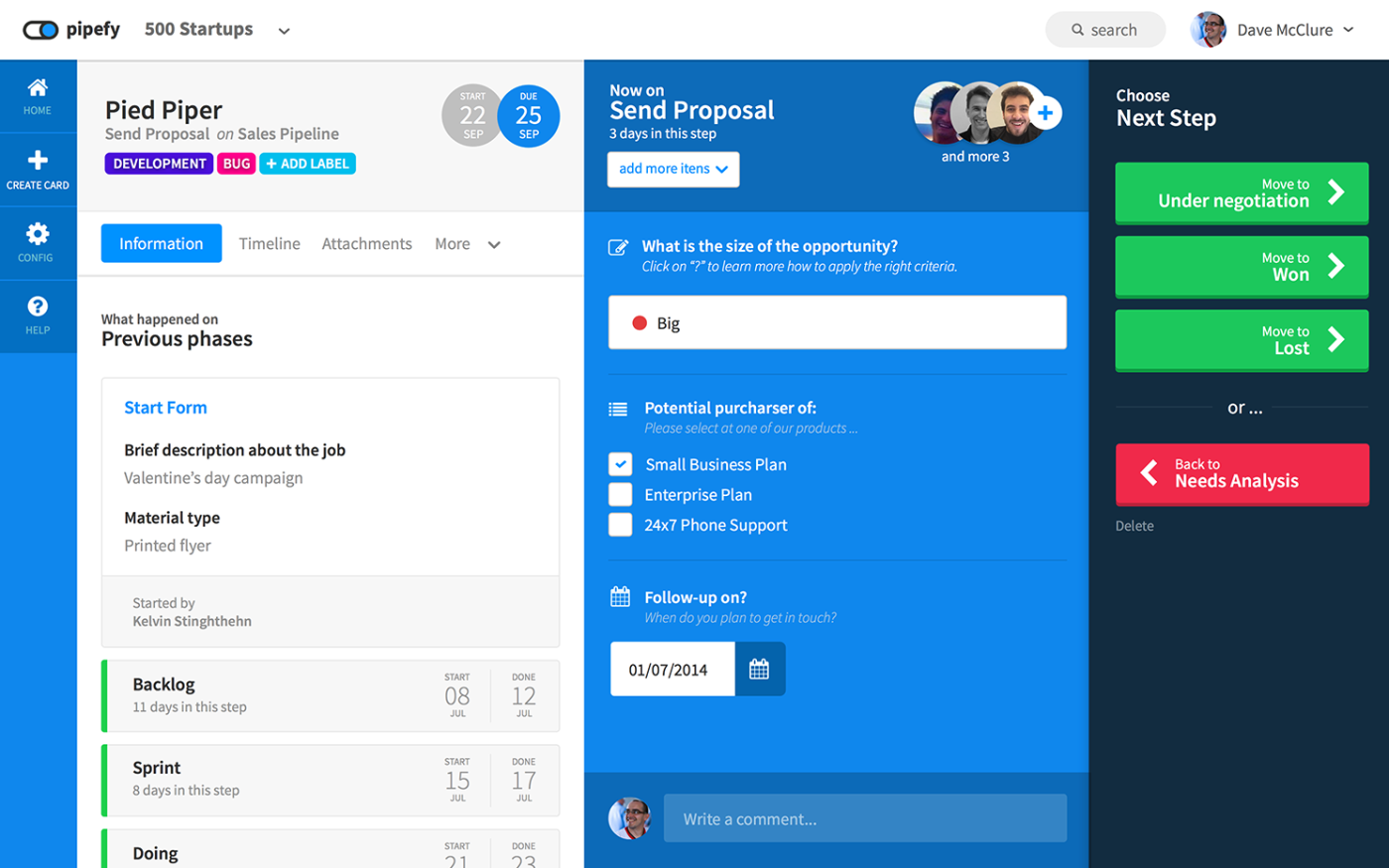
Have complex projects that need different steps depending on how they turn out? Pipefy's workflows can be a great way to make flexible standard operating procedures for any type of process. Each checklist shows "Next Steps" once its finished, to choose how the project will proceed, and you'll get see the next checklist for that route.
And, if you're not sure where to start with making such detailed workflows, Pipefy includes process templates for dozens of popular projects and workflows that you can adopt for your own needs.
Pipefy is free for up to 100 cards, then starts at $5/month per user for creating your own processes with integrations and API access.
Hackpad

Hackpad mixes a notes app with a wiki, forming a place to store interconnected documents. You'll write notes in plain text, and use simple formatting to keep everything looking consistent. Drag in images and write a few checklists, and you'll have everything in one place.
Hackpad uses tag-like collections to group related documents, and you can link pads together via hashtag-based references. That way, you can write documentation once and link to it later.
Evernote
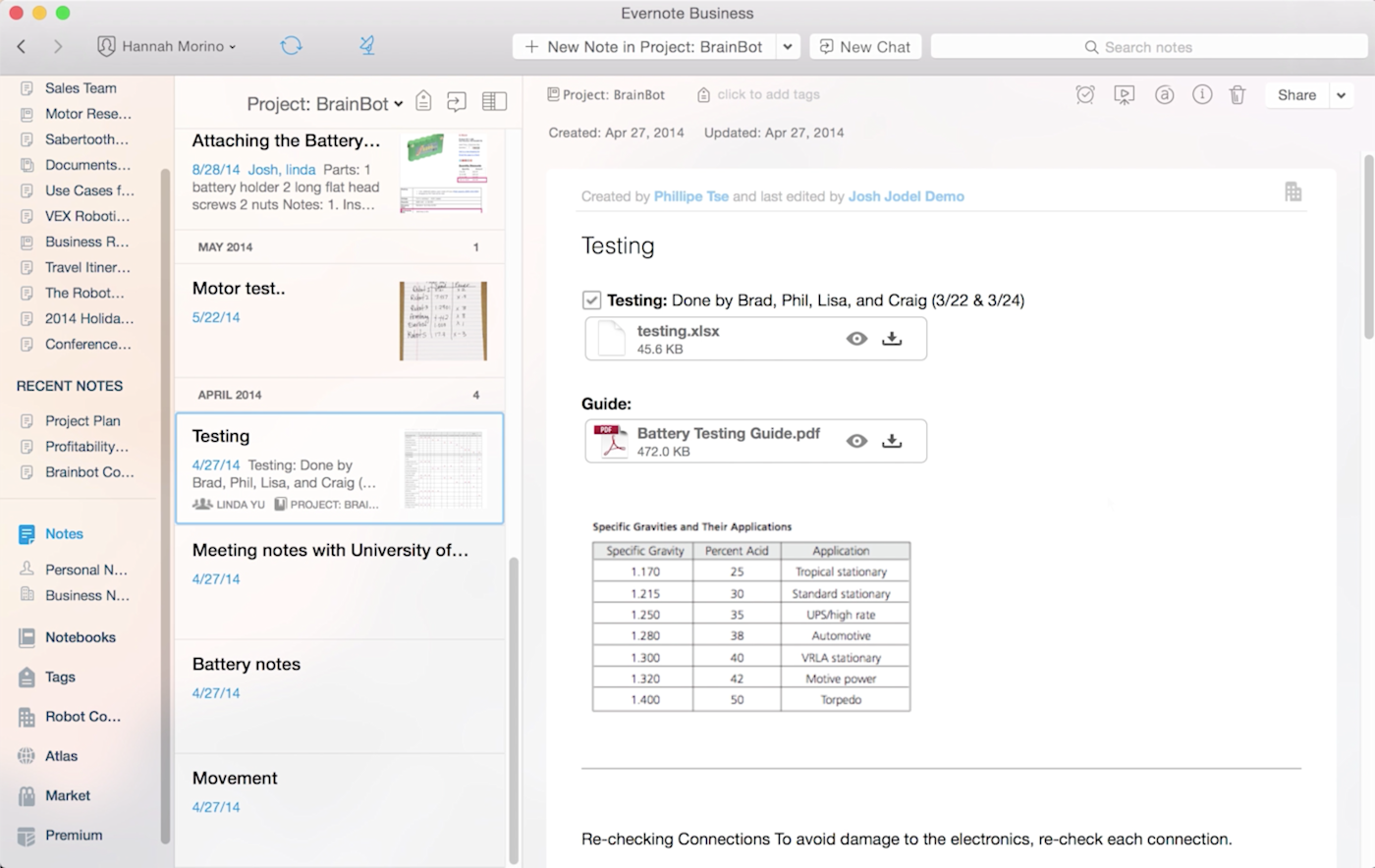
The popular note-taking app Evernote also makes a solid repository for your SOPs. Using notes, you can write up your instructions, create checklists, and drag in your organizational structure diagram.
Then, you can organize those notes into notebooks that can be shared with the whole team. Looking for more collaboration options? Evernote also includes team chat, so you can discuss your work right alongside your SOP documents.
Evernote offers apps for most devices, along with a web app, so your team can see the SOPs anywhere. And if anything gets changed, you can jump back to previous versions to see if anything important was lost.
WorkFlowy

WorkFlowy can help you create a basic set of SOPs around checklists. Much like Wunderlist, it’s free, available on virtually every platform, and offers some powerful collaboration features.
Unlike Wunderlist, though, WorkFlowy lists everything on a single page in bullet-point form. It's easy to create and organize these lists and sub-lists, but the text-based nature of the app can cause some communication issues. For example, images aren't WorkFlowy's strong suit, so more detailed SOPs might break down in this format.
Trello
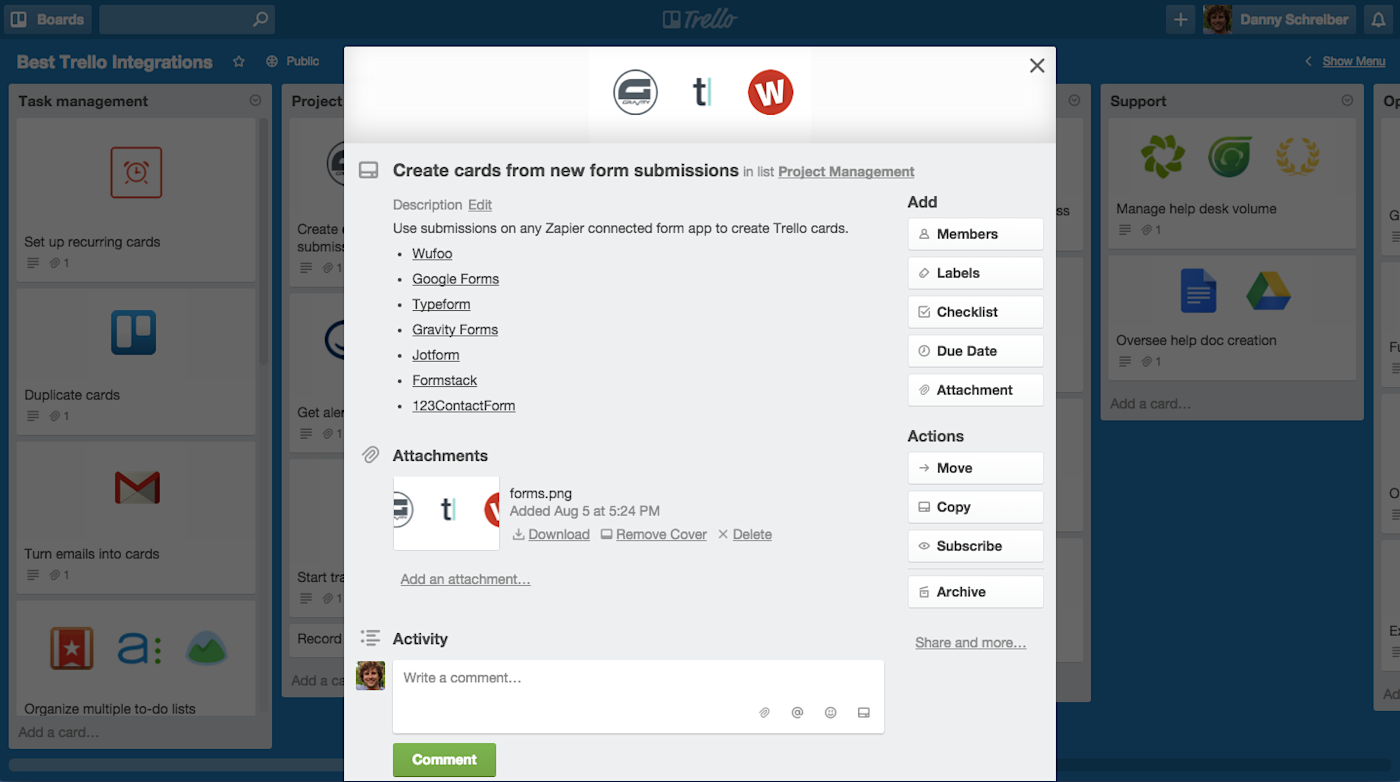
Primarily used as a project management tool, Trello can also be used as a tool for documenting procedures. For every task you have, you can create a new card, and then write detailed instructions in the form of checklists and notes.
Trello lets you attach files to cards, use comments to discuss how the tasks are progressing, and move items through your processes with a drag-and-drop interface.
Best of all, it’s free for almost everything your team would need.
Help your team get more out of Trello with our roundup of Trello tricks, automations, workflows and more.
Preempting Problems with SOPs
Standard Operating Procedures really come down to one thing: consistency.
Every growing business should be documenting the most complete SOPs possible, so your processes can scale with your team. Without them, you risk of providing inconsistent service and cleaning up your own train wrecks.
Start with the right tools, detail the processes you use every day, and you'll be on your way to a collection of foolproof SOPs.
You've got your team's projects under control, with consistent results thanks to standard operating procedures and checklists. But what about your personal projects, those tasks at home that keep piling up or the freelance gig you've recently taken on?
Those need a project management system too—perhaps the same one you're using for your day job. In the last chapter, we'll look at how to use a project management app for personal projects.
Image credits: Artist’s impression of The Great Train Wreck of 1856 courtesy Frank Leslie’s Illustrated Newspaper.





